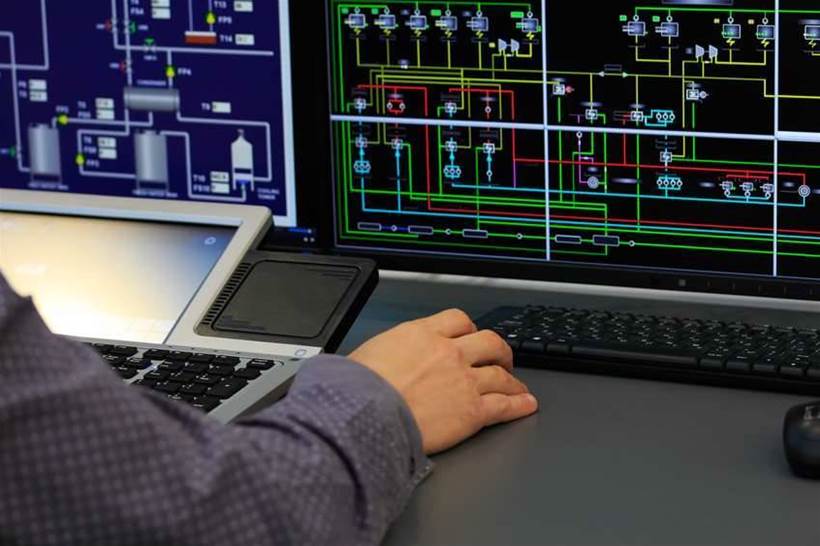Few people doubt that industrial Internet of Things (IIoT) technologies have the potential to revolutionise operations in many vertical industries, but according to an executive from enterprise software solution provider IFS, three common misconceptions are preventing businesses from realising IIoT's potential.
Dan Matthews, CTO of IFS, said organisations are delaying IIoT adoption, believing that they should wait for standardisation, that IIoT will be a giant leap for their business, demanding a lot of work, or that it will be expensive and capital-intensive.
However, delaying could be a big mistake, he said, and he set about busting each of these myths.
Myth 1: We should wait for standardisation
Matthews suggested that if you’re waiting for standardisation among the myriad of technologies being used in industry, you could be waiting for some time.
“If you’re going to wait for IoT standards in the kinds of businesses that use various technologies of different ages like oil drilling, for example, you basically have to wait for people to sort out the standards, then wait for all the manufacturers to agree and start building equipment that is conformant to those standards, and then you have to commission a new drilling platform, so you might not be done until 2020,” he explained.
“There’s no reason to wait that long, and you’d end up losing a huge opportunity if you do.
“What a lot of our customers are doing is looking at how they can go and interface with the things that are already out there and accept that fact that there will be a high level of equipment diversity within your operation.”
Matthews also said the significant costs associated with replacing existing equipment, along with their long lifecycles, would make it difficult to justify the expense of replacing functional equipment with new devices, simply because they conform to a new standard.
“Companies are better off focusing on how they can use the combination of interfacing with the hardware and software you already have, as a lot of those things have sensors on them already, but may only interface within a closed system,” he said.
“You’re better off focusing on how you can get access to the data generated by your existing systems and combine it with other data and run analytics against it, so the data goes beyond simple operational use.”
Matthews was quick to point out that standardisation would be a good thing within an industrial environment, but uncertainty over the timeframe for such standards to be developed means that businesses should instead look to work with what they have now, while keeping an eye on the standardisation landscape into the future.
Myth 2: IIoT would be a giant leap for my business, demanding a lot of work
Contrary to the second myth – that IIoT is a giant leap – Matthews contended that IIoT integration success is about choosing small, actionable steps that will provide business improvements today.
“If you take many of these heavy industries, a lot of equipment maintenance for example is done on a calendar basis, so a lot of our customers are wanting to move from this model to a condition-based maintenance system, such as servicing after X number of hours, and building from that towards more predictive models,” he said.
“Companies should look for parts of their process that would affect their entire operation if things went wrong, and then look at processes that have lengthy service restoration cycles, where things like time to receive replacement parts would be considered.
“Overarching all of these criteria should be the consideration about where a company could realistically implement a change.”
Implementing these incremental changes and realising the benefits of them is not only cheaper and easier, but such projects could then be used to justify further investment into larger operational changes, according to Matthews.
“We see companies using these relatively easy projects as a selling point internally to the sales department, to equipment manufacturers during service contract negotiations, or to executive management,” he said.
Myth 3: IIoT will be expensive and capital-intensive
Matthews acknowledged that IIoT might have been expensive and capital-intensive a few years ago, but that’s no longer the case.
“Usually, the IT cost is not a major factor when considering an IoT platform, nor are the sensors,” he explained.
“What seems to be the issue most of the time is the process of physically kitting out the factory or mine or oil rig with these IIoT technologies.
“The change management process for rolling out new types of equipment or new types of networks is typically more expensive than the equipment itself.”
The other ‘expense’ that many companies experience is the dedication of inordinate amounts of time in ensuring that important data is collected, without considering the sorts of insights and actions that could potentially result from its collection.
Matthews said the key minimising the cost of implementation and data analysis is to employ the services of an external technology provider that is well-versed in performing these functions.
“These technology providers can reduce the risk and complications associated with implementation and analysis, and help businesses turn the data they collect into an optimised plan for future business execution,” he said.
“These companies usually have the expertise to handle the connectivity of the devices, but not necessarily the knowledge on how to turn it all into action and savings for their operations – it’s just not part of their core business.”







